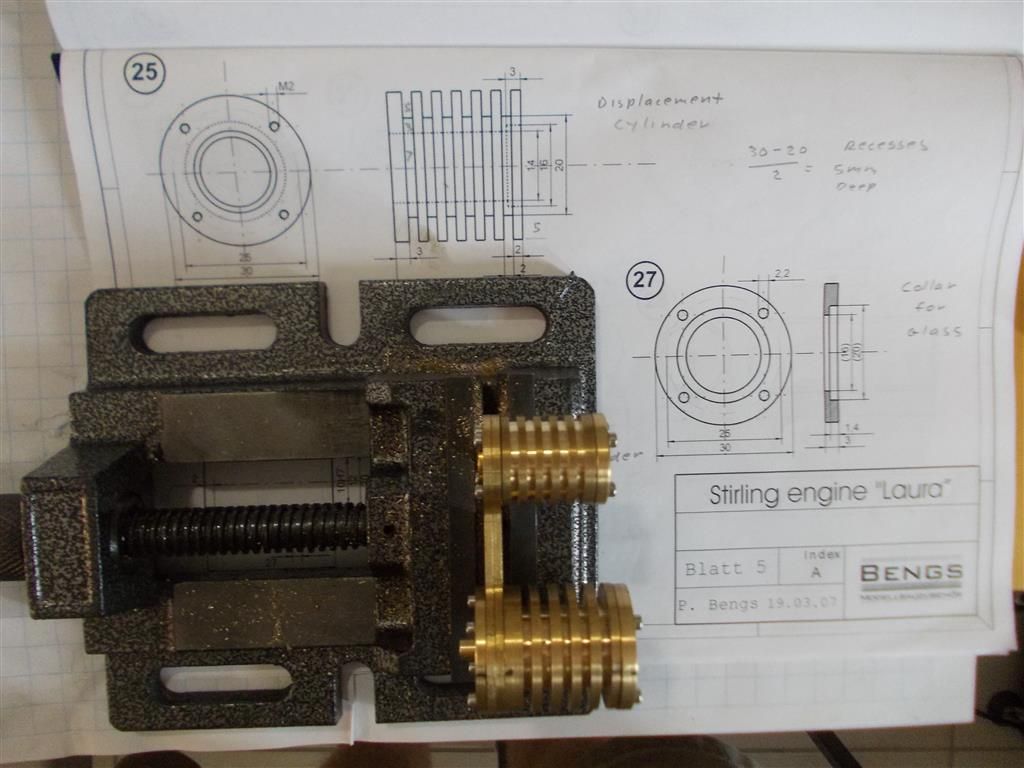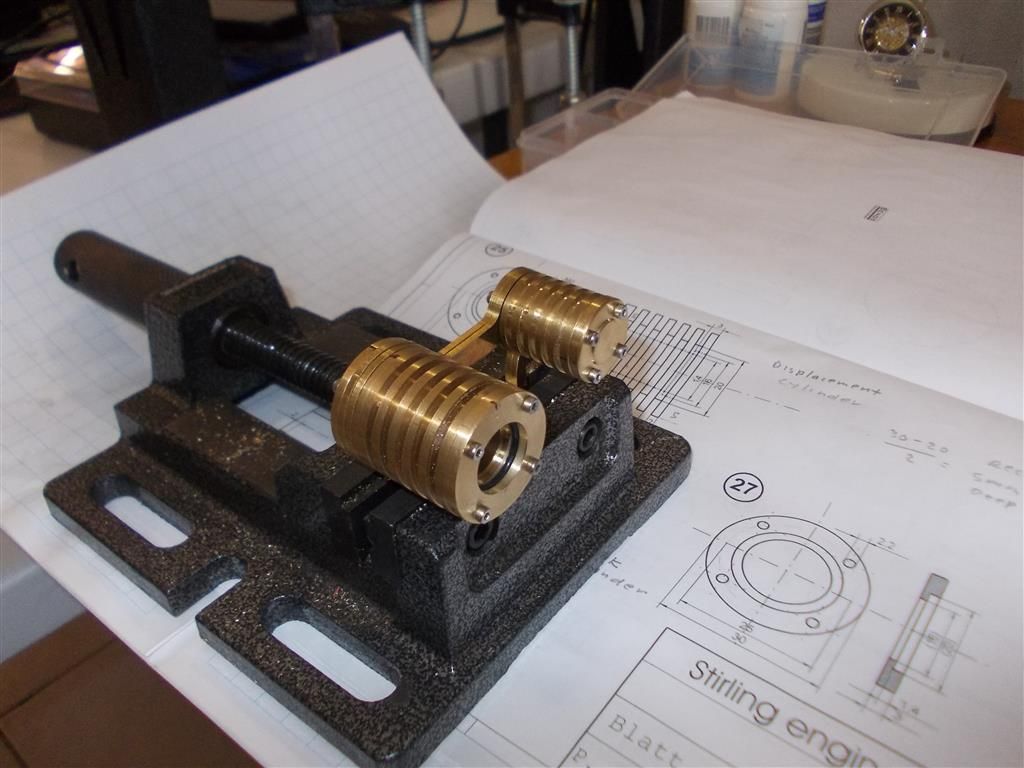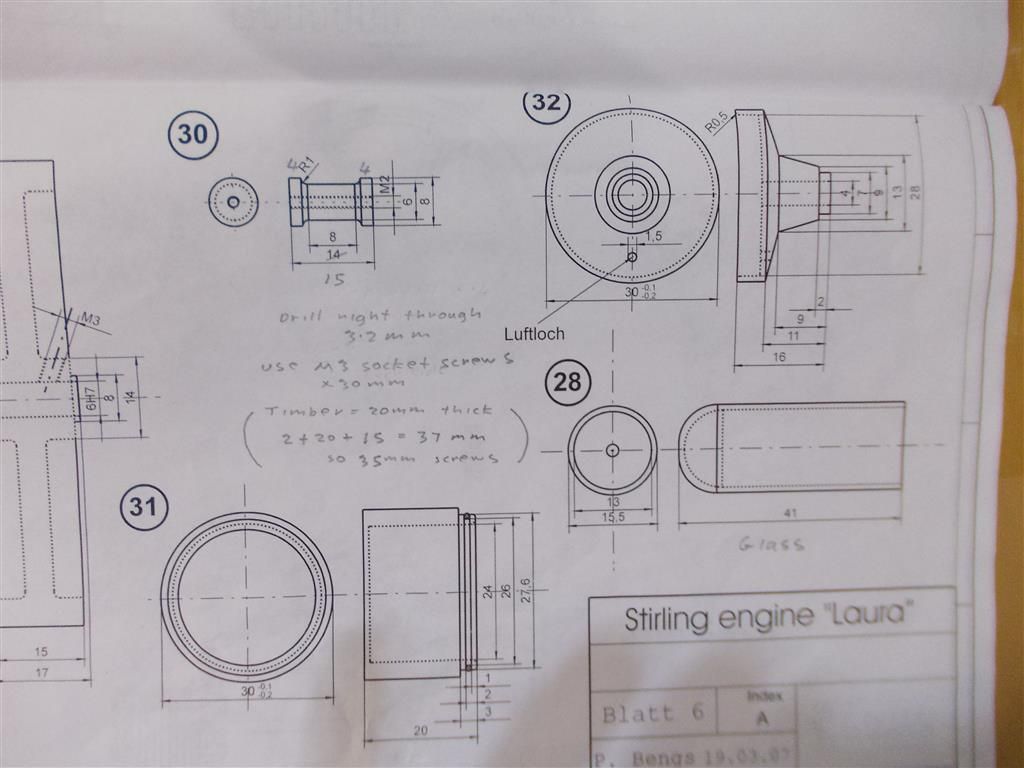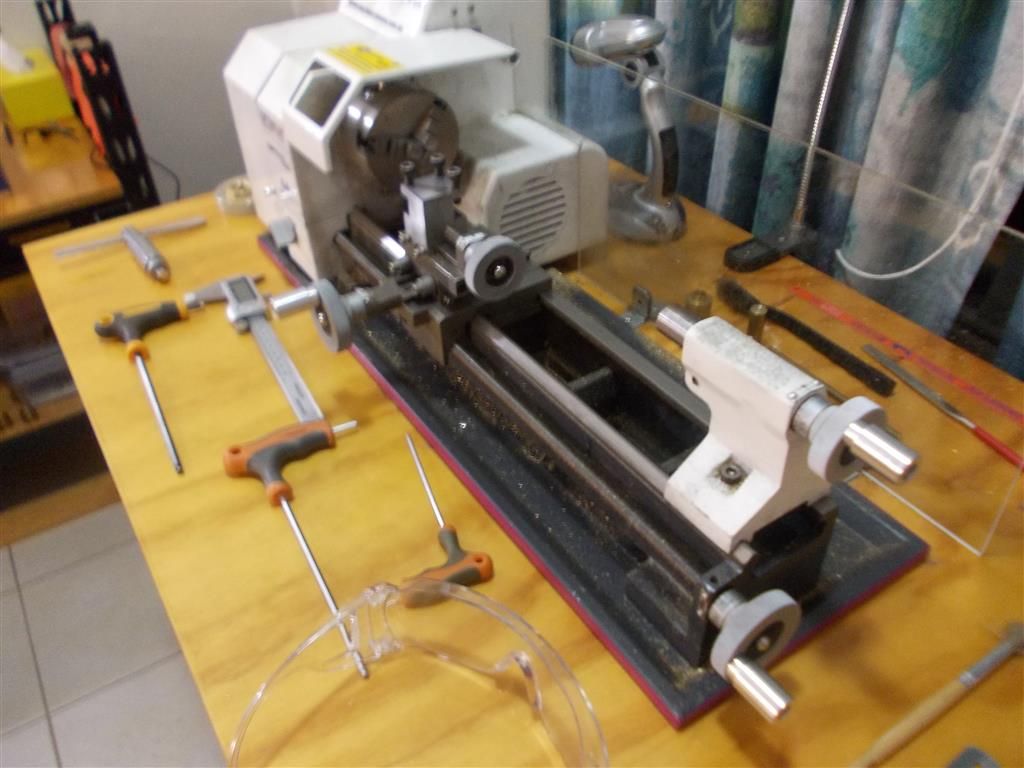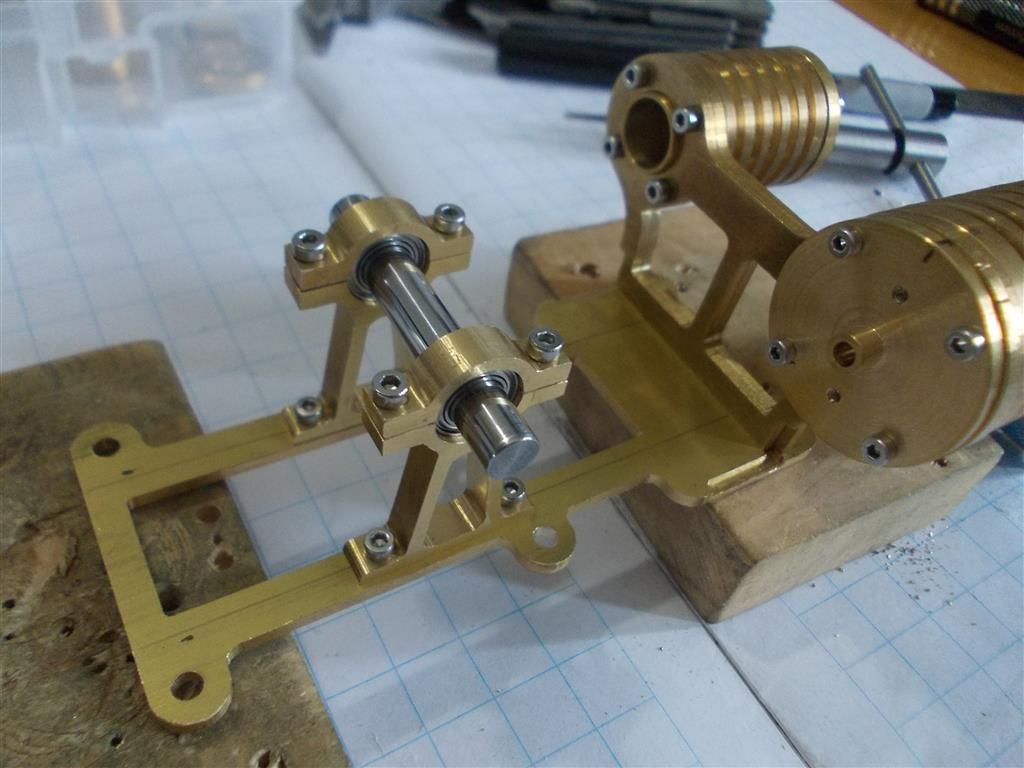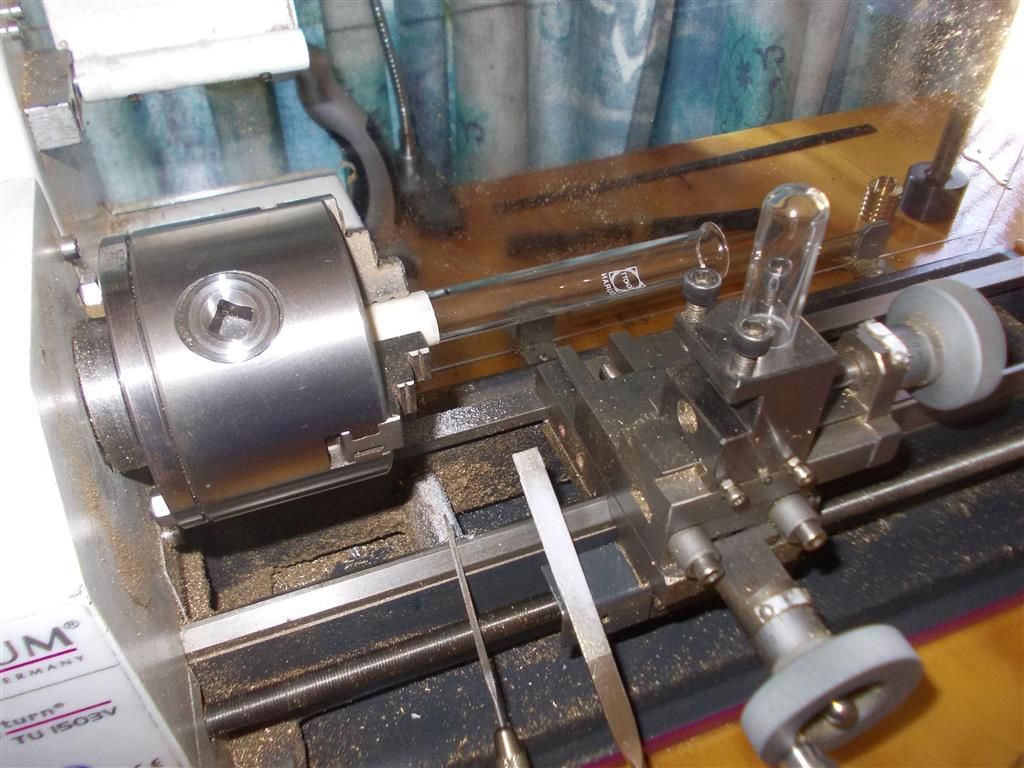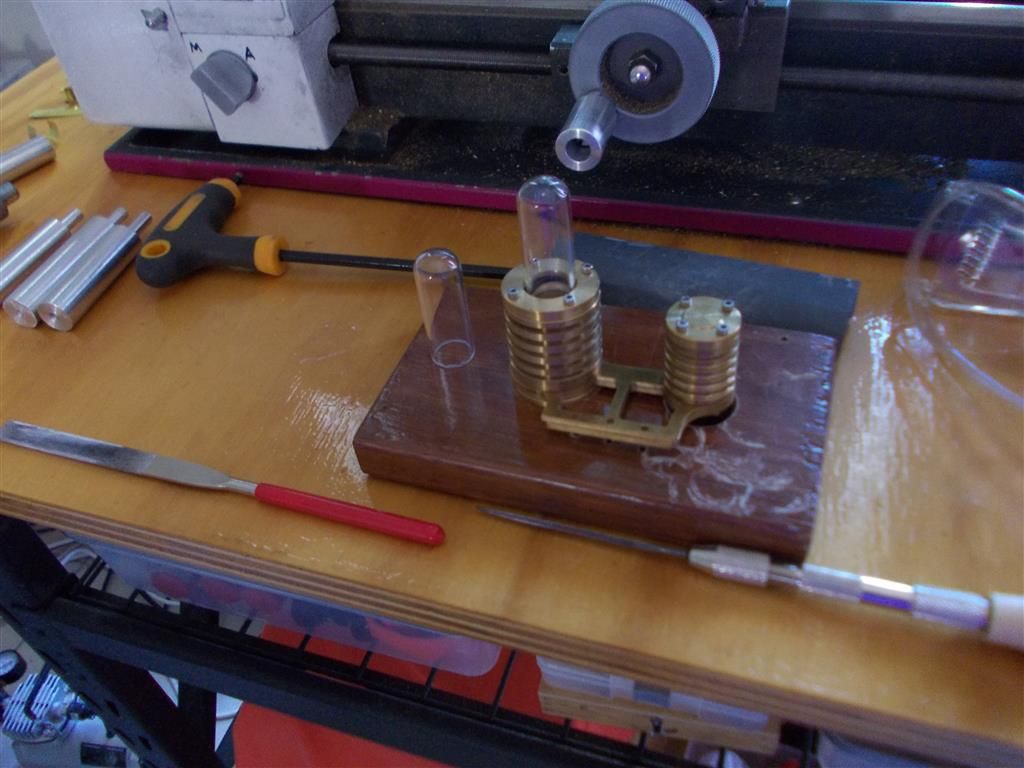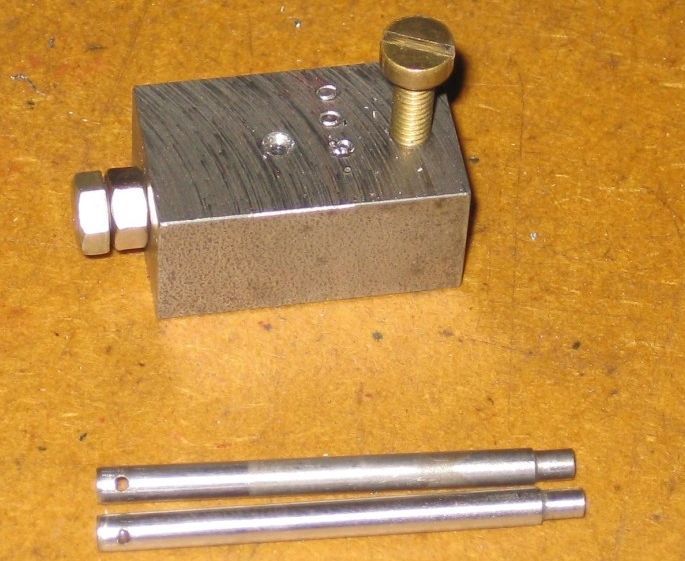It looks like you are making good progress Brian.
Couple things you can do to avoid drilling through bore again might be to make a drilling template, a circle of steel like a thick flat washer that fits over the end of the cylinder and has the hole drilled in exactly the right place. (If the first hole is not quite right, you can keep drilling more holes until you get it right. Use the lathe to mark the circle on the drill jig washer at the diameter where you want the centre of the hole to be.
Then make sure the bore is dead square to the end of the cylinder that bolts to the frame. These should ideally be machine in one set up to ensure perfect squareness. If not, you can make mandrel with a taper of about .001" that the bore fits over, without removing the mandrel from the lathe, and then machine the end of the cylinder square with the bore that is a tight fit on the freshly turned mandrel. An alternative to the taper is a neat fitting parallel mandrel and a spot of Loctite to hold the cylinder on firmly.
Then check/machine the other end of the cylinder so it too is square to the bore. This is the surface the cylinder sits on when drilling it.
I would sit the cylinder straight on the drill press table, perhaps with a pair of toolbit blanks under it as parallels so you can drill through the cylinder without hitting the drill press table. A nut and bolt and pair of washers with the bolt runnign through the bore and a T slot etc in the table will clamp it down nice and firm. This eliminates the cylinder getting out of square in the vice, which maye or may not sit perfectly square as bought.
I wouldn't use gaskets or silicone to seal. I would use a spray can of Hylomar gasket sealer to just mist a thin thin layer of sealer on the necessary surfaces. Let it dry out completely before assembly then put together in the normal manner. Allied Bearings carries the Hylomar. A little of it goes a long way. But it does not make blobs and strings inside the engine like silicone will.
Gordon Tarling.


.jpg)

